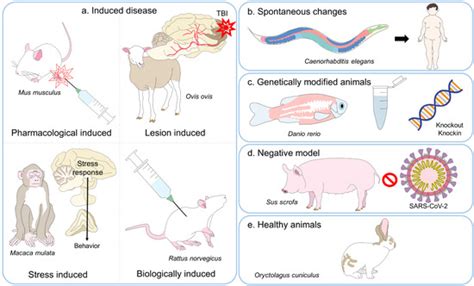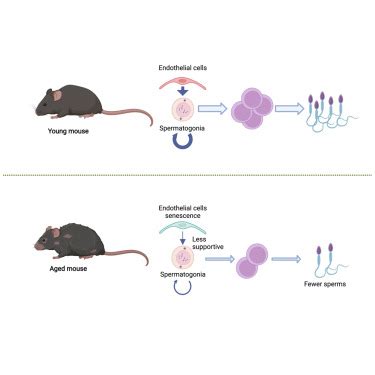Critical Theory in Veterinary Medicine offers a unique lens through which to analyze and understand the complexities of pet care and veterinary practice. This approach examines the underlying power structures, societal influences, and ethical considerations that shape the field. By exploring the historical development and key concepts of Critical Theory, we can better appreciate its application to veterinary research. This article delves into recent studies, analyzing their implications for practice and highlighting the potential challenges and criticisms. Through case studies, we illustrate the practical impact of Critical Theory, while also looking ahead to future directions and emerging trends in this evolving area.
dominure.com invites you to delve into this topic thoroughly.
1. Introduction to Critical Theory in Veterinary Medicine
Critical Theory in Veterinary Medicine offers a comprehensive framework for examining the dynamics and structures that influence pet care and veterinary practice. Rooted in the broader tradition of Critical Theory, which originated in the Frankfurt School of social theory, this approach seeks to uncover and challenge power imbalances, ideological biases, and ethical dilemmas within the field of veterinary medicine. It emphasizes the importance of understanding the social, cultural, and economic contexts in which veterinary practices are embedded.
The application of Critical Theory to veterinary medicine is relatively novel, yet it provides valuable insights into how scientific knowledge and medical practices are shaped by broader societal forces. By critically examining research methodologies, clinical practices, and policy developments, this approach aims to foster a more equitable and reflective veterinary practice. It encourages veterinarians, researchers, and pet owners to consider not just the biological aspects of animal health, but also the ethical, social, and political dimensions.
In this article, we introduce the foundational principles of Critical Theory and explore its relevance to veterinary medicine. We will discuss how this theoretical lens can be applied to analyze current research, highlight its implications for practice, and address potential challenges and criticisms. Through this exploration, we aim to demonstrate the transformative potential of Critical Theory in enhancing the quality of care and well-being for pets.

2. Historical Development and Key Concepts of Critical Theory
Critical Theory emerged from the Frankfurt School in the early 20th century, founded by thinkers like Max Horkheimer, Theodor Adorno, and Herbert Marcuse. This theoretical framework sought to address the limitations of traditional Marxism by integrating elements of philosophy, sociology, and psychology to critique modern society. The core idea of Critical Theory is to uncover and challenge the underlying power structures and ideologies that perpetuate social inequalities and injustices.
Key concepts of Critical Theory include the critique of ideology, the examination of power dynamics, and the importance of social context in shaping knowledge. It emphasizes that scientific and social practices are not neutral but are influenced by historical and cultural factors. This perspective encourages a reflective and self-aware approach to knowledge production, urging practitioners to question established norms and practices.
In veterinary medicine, applying Critical Theory involves analyzing how societal values and power relations affect animal care and research practices. It encourages veterinarians to consider not only the scientific aspects of their work but also the broader ethical and social implications, aiming to promote a more equitable and humane approach to veterinary care.

3. Application of Critical Theory to Veterinary Research
Applying Critical Theory to veterinary research involves examining how power structures, social ideologies, and ethical considerations influence the generation and interpretation of knowledge within the field. This approach encourages researchers to critically assess the assumptions underlying their studies, including how societal values and biases shape research priorities and methodologies.
One key application is the analysis of how research funding and institutional policies impact the focus and scope of veterinary studies. Critical Theory highlights the need to question whose interests are represented and whether certain areas of research are marginalized or prioritized based on economic or ideological factors. For instance, the emphasis on certain diseases over others may reflect broader social and economic priorities rather than the actual needs of animal populations.
Additionally, Critical Theory prompts a reevaluation of research practices themselves. This includes scrutinizing how data is collected, interpreted, and applied, and considering whether these practices perpetuate existing inequalities or contribute to more inclusive and equitable outcomes. By integrating Critical Theory, veterinary research can become more reflective of and responsive to the complex social and ethical dimensions of animal care, ultima

4. Analysis of Recent Research Studies Through a Critical Theory Lens
Analyzing recent research studies through a Critical Theory lens involves examining how underlying power structures and societal biases influence the outcomes and implications of veterinary research. This perspective encourages a deeper look at which research topics receive attention and which are overlooked, often revealing disparities driven by economic or ideological factors.
For example, studies funded by commercial interests may prioritize research on high-profit areas, such as pharmaceuticals or breed-specific diseases, potentially neglecting less profitable but equally important issues like welfare for less popular pets or rare conditions. Critical Theory also questions the representation of different perspectives within research, such as whether diverse voices and marginalized communities are adequately included in study design and execution.
Furthermore, this lens scrutinizes how research findings are applied in practice, considering whether they reinforce existing power dynamics or contribute to more equitable outcomes. By challenging traditional assumptions and highlighting these biases, Critical Theory aims to foster a more comprehensive and socially responsible approach to veterinary research, ensuring that findings better serve the needs of all animals and stakeholders.

5. Implications of Critical Theory for Veterinary Practice
The implications of Critical Theory for veterinary practice are profound and multifaceted, impacting both the approach to patient care and the broader operational aspects of veterinary medicine. By applying Critical Theory, veterinarians are encouraged to critically evaluate the underlying assumptions and power dynamics influencing their practice.
One significant implication is the reexamination of standard procedures and treatment protocols. Critical Theory prompts practitioners to question whether these practices are influenced by commercial interests or entrenched biases rather than solely focusing on the best outcomes for patients. This can lead to more ethical and patient-centered care, prioritizing animal welfare over financial gain or tradition.
Additionally, Critical Theory advocates for a more inclusive and reflective approach to veterinary practice. It encourages veterinarians to consider the diverse needs of all animals and the varied social contexts of pet owners, ensuring that care is equitable and responsive to different communities.
Moreover, this perspective promotes ongoing self-assessment and professional development. Veterinarians are urged to remain aware of how their own beliefs and values may impact their practice and to engage in continual learning and adaptation to address emerging social and ethical issues in animal care.
Overall, integrating Critical Theory into veterinary practice can lead to more holistic, just, and compassionate approaches to animal health and welfare.

6. Challenges and Criticisms of Applying Critical Theory in Veterinary Medicine
Applying Critical Theory to veterinary medicine presents several challenges and criticisms. One major challenge is the integration of theoretical concepts into practical veterinary settings. Critical Theory’s abstract nature can make it difficult for practitioners to translate its principles into actionable strategies, potentially leading to resistance or confusion within established practices.
Additionally, there may be skepticism about the relevance of Critical Theory to veterinary medicine, with critics arguing that it introduces unnecessary complexity or diverges from the primary focus on animal health. Some contend that focusing on ideological and social critiques could detract from the practical aspects of veterinary care.
There are also concerns about the potential for Critical Theory to be perceived as overly critical or confrontational, w

7. Case Studies Demonstrating the Impact of Critical Theory on Pet Care
Case studies demonstrating the impact of Critical Theory on pet care reveal how this perspective can lead to significant improvements in veterinary practice. For instance, a study on breed-specific legislation highlighted how Critical Theory could address biases in veterinary care. By applying a Critical Theory lens, researchers uncovered that certain breeds were disproportionately targeted by restrictive laws, often influenced by societal prejudices rather than medical evidence. This led to advocacy for more equitable policies that focus on animal welfare rather than breed stereotypes.
Another case study involved examining the influence of pharmaceutical company funding on research priorities. Critical Theory helped identify how financial incentives shaped research focus, often favoring high-profit treatments over those addressing less lucrative but important health issues. This insight prompted calls for more transparent funding practices and a greater emphasis on research that addresses the needs of all animals.
Additionally, Critical Theory has been applied to analyze the inclusivity of veterinary education. By assessing how diverse perspectives are represented in curricula and research, educators have been encouraged to incorporate a wider range of viewpoints, leading to more comprehensive training and better-prepared veterinarians.
These case studies illustrate how Critical Theory can uncover hidden biases and drive positive change, ultimately

8. Future Directions and Emerging Trends in Critical Theory within Veterinary Medicine
Future directions and emerging trends in Critical Theory within veterinary medicine suggest a growing integration of this perspective to address evolving challenges in the field. One key trend is the increasing focus on ethical and social justice issues, such as the welfare of neglected or marginalized animal populations and the impact of socio-economic factors on pet care. Critical Theory will likely continue to drive efforts toward more equitable and inclusive veterinary practices.
Another emerging trend is the application of Critical Theory to technological advancements in veterinary medicine. As new technologies and treatments become available, this perspective can help assess their broader implications, including potential biases in their development and access.
Furthermore, there is an expanding interest in interdisciplinary approaches that combine Critical Theory with other fields, such as public health and environmental science. This holistic approach aims to address complex issues at the intersection of animal care, human health, and environmental sustainability.
Overall, the future of Critical Theory in veterinary medicine promises a more reflective and socially conscious practice, fostering continuous improvement in animal welfare and the ethical dimensions of veterinary care.

Incorporating Critical Theory into veterinary medicine offers valuable insights into the social and ethical dimensions of pet care. By challenging established norms and addressing underlying biases, this perspective fosters a more equitable and reflective approach to veterinary practice. As we continue to explore and apply Critical Theory, we can enhance the quality of care, promote inclusivity, and drive meaningful improvements in animal welfare. Embracing these principles ensures that veterinary practices evolve in alignment with broader social and ethical values.
dominure.com

